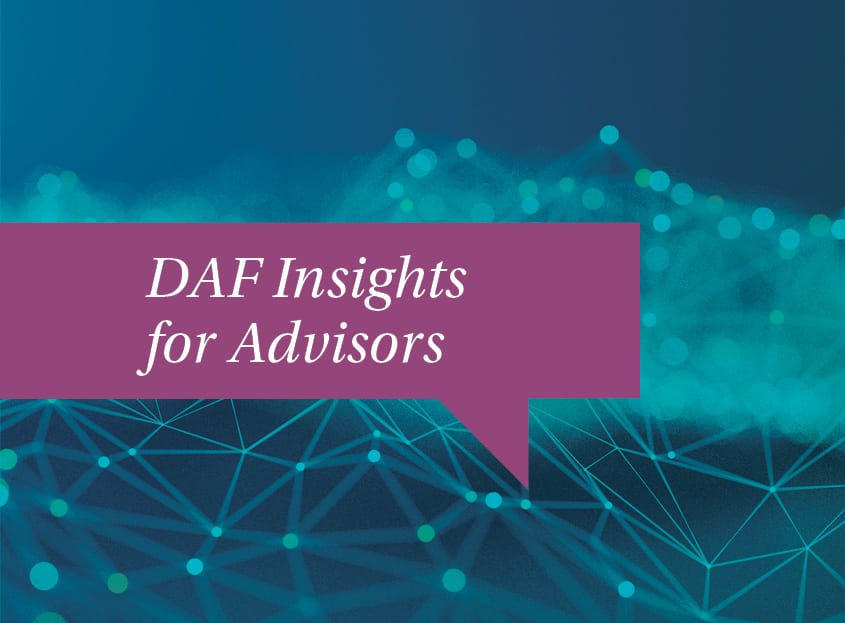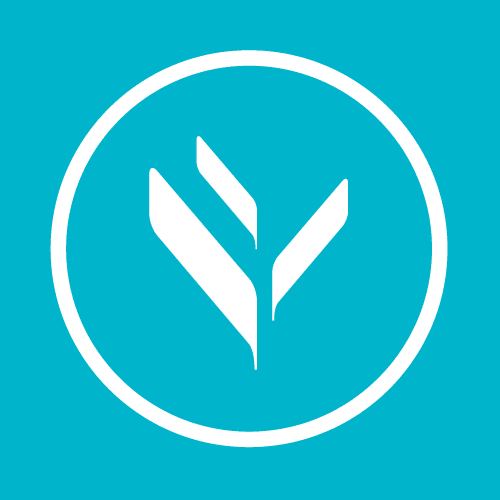Five Ways Your Client’s DAF Can Support Their Philanthropic Strategy

When your client opens a donor-advised fund (DAF), they may be at any point of their philanthropic journey. Some people who establish DAFs are seasoned donors with strong connections to the organizations they want to support; others open DAFs as their first step toward a more organized charitable giving practice.
Whether your client already has a philanthropic strategy or is just starting to plan one, you should be involved in the conversation.
We have written before about why it’s important to talk to your clients about giving; we’ve offered some tips on how to start the conversation and even when to have it. While giving can be a very personal practice, your clients will benefit from having your participation. Your input is needed in helping them think through the financial implications of their philanthropy, and in doing so you are strengthening your relationship and getting a better picture of what’s important to them as you are managing their wealth portfolio.
You may not feel ready to have conversation about philanthropic strategy, and that’s all right; you don’t need to be an expert to participate in the initial exploration. Our own charitable experts at NPT have put together a suite of resources you can use with your client as they start (or continue) to hone their charitable plan.
Defining Your Philanthropic Strategy offers a five-step framework around which your client can structure their giving, narrow their focus, and see what works. We curated other resources here, including workbooks from the Stanford Center on Philanthropy and Civil Society, that will help you ask the questions your client needs to answer to develop a more mindful and meaningful approach to philanthropy.
When you do have these philanthropic conversations, your role is not to make decisions on your client’s behalf, but to help them better understand their own goals and to find tactical ways to implement the strategy they choose. And when your client decides to use a DAF to power their strategy, you can show them how best to leverage this charitable tool.
For starters, here are five ways a DAF can be used to support your client’s strategic giving:
1. A DAF saves time. Because the DAF sponsor handles all administrative paperwork, tax filing, grant checks and other back-end work, opening a DAF saves your client the time, energy and expense of managing a vehicle like a foundation. This frees your client’s schedule so that they can focus on the more important work of giving: their charitable impact.
2. A DAF helps manage a giving budget. One of the first steps of developing a giving strategy is to determine an annual giving budget. When your client makes a contribution to a DAF, they can get a single gift receipt and take a charitable deduction right away—even if the contribution is large enough to fund many grants down the road. Some donors find it useful to fund their DAF with enough to cover their annual budget all at once, so that they can better track the DAF’s balance as they grant it out. This strategy offers donors the added benefit of streamlining their tax paperwork.
3. A DAF can automate regular giving. As your client outlines their strategy, they will likely share that they have a connection to a specific nonprofit or nonprofits that they want to support year over year. If your client knows they will give regularly to a given organization annually—or even quarterly or monthly—you can set up a recurring grant schedule in just minutes. The DAF sponsor will manage the grant payments, and you can change or cancel the schedule at any time.
4. A DAF can convert complex assets into charitable capital. One of the unique advantages of a DAF is its ability to accept a wide range of assets beyond cash, including illiquid assets like privately held business interests, real estate or restricted stock. NPT’s team of experts can help your client convert these complex assets into charitable capital, unlocking their philanthropic potential. This creates an opportunity for your client to make a significant charitable contribution—often with potential tax advantages. For example, one donor contributed shares of a privately held company ahead of a liquidity event. The result? A substantial tax deduction and a long-term charitable funding source.
5. You can review and manage DAF giving at any time. With NPT GivingPoint, our donor portal, you and your client can monitor DAF activity and plans from any personal device. A dashboard shows you transactions in any custom date range—for instance, a given calendar year—so that you can measure how your client is progressing and how close they are to their target giving goals.
With your support and the help of a powerful giving vehicle like a DAF, your client will be able to gain clarity on their philanthropic goals and access the tools they need to see them through.
If your client is interested in further support in exploring a charitable strategy or is looking for more advanced consultation on philanthropic impact, our Philanthropic Solutions team is also available to help.
We advise you to explore the resources on the Defining Your Philanthropic Strategy page. If you would like more guidance on how to initiate these conversations with your client, our team of Regional Directors would be happy to talk and are available to lead a training session for you and your colleagues. Reach out to us at npt@nptrust.org or (888) 878-7900.
NPT does not provide legal or tax advice. This blog post is for informational purposes only and is not intended to be, and shall not be relied upon as, legal or tax advice. The applicability of information contained here may vary depending on individual circumstances.


